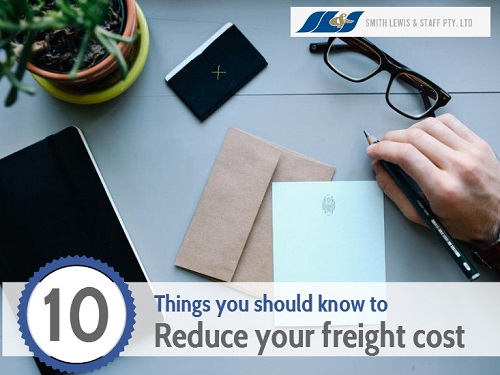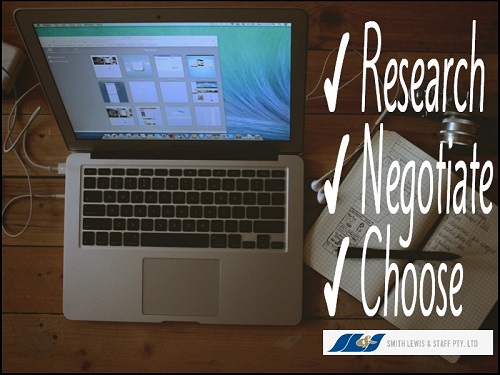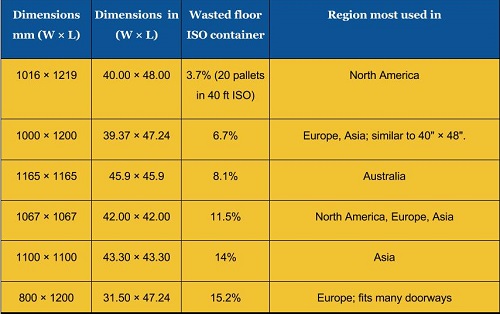Plan early to reduce your freight cost

Finding competitive freight rate is one of the most challenging factors facing supply chain owners, today. As more and more consumers prefer online purchase than traditional shopping, the demand for a cost effective yet reliable shipping solution has become absolutely inevitable.
In a study conducted by Pitney Bowes, it reveals that:
- 81% of consumers who made online purchase required tracking on their package
- 49% of consumers have abandoned their purchase due to huge shipping costs
- 77% prefer free shipping than fast shipping
With this in mind, supply chain owners should find ways how they could lower shipping rates passed to their consumers. In this 2nd part of Smith Lewis' three-part series about supply chain and logistics management, Brett Lewis shares more expert advice on how you can make this happen.
How to plan your logistics and supply chain management effectively to reduce freight costs
Everything starts with planning. It may sound simple but this could be one of the most difficult and daunting process you need to perform.This entails investing time and knowledge:
- Collecting data about your products
- Performing accurate sales forecast
- Reviewing monthly operational expense to include shipping costs
- Evaluating your trade and logistics partners' performance
- Assessing consumer's purchase trend
Doing this in a regular basis will ensure more accurate information about the volume of cargo you need to ship direct to store. It will also be helpful for you to effectively execute these tips that could reduce your freight cost.

Get suppliers to use your shipping account number
Increase your shipping volume by letting your supplier use your account number
After finding a legitimate supplier, ensure you prompt them to use your shipping account number. This is often neglected by some supply chain owners, but this is one of the easiest ways you can reduce your freight cost. It easily increases your business shipping volume allowing you to receive better freight rates.
Negotiate with multiple carriers
Lower rates are given to business with higher shipping volume done on a regular basis.
'Customers are always right' and this saying is true even to small and medium sized business owners. You have the power to negotiate, so do take advantage of it. Compare prices and haggle with the rates offered by freight forwarders. Identify your regular shipping volume and persuade them to offer you a lower rate.
Check out remote shipping lanes with lower rates
Some remote shipping lanes come with lower rates so do check these out.
Freight forwarders may immediately offer common and popular shipping lanes to you, especially when establishing and negotiating rates. However, go and check optional remote lanes as these often come with lower rates.
Understand the cost per mile of freight rates to include fuel surcharge
Be mindful of the price of fuel to save more.
Some companies have a habit of adding to fuel charges when gas prices are high and leaving them there when prices go down. Learning how to calculate your cost per mile will ensure you are not being overcharged. If you feel they are, then never hesitate to ask for a better rate.
How are fuel charges calculated?
This is the formula for calculating fuel surcharge.
Fuel surcharge = (current fuel price - base fuel price) / base fuel mileage
wherein:
Current fuel price refers to the price of the fuel in the market, today, let's say $4.14
Base fuel price refers to the average fuel price in the market. In this case, let's say $1.55
Base fuel mileage refers to the number of miles a gallon of fuel reaches, let's say 6 miles
Using this formula, the fuel surcharge per mile will easily be calculated as:
Fuel surcharge per mile = ($4.14 - $1.55)/ 6 miles
Fuel surcharge per mile = .44
Further take note that as mileage increases, the fuel surcharge per mile will also increase. The same effect happens when fuel price rises.
Use packaging provided by your carrier and the services of a 3PL provider
Avoid paying dimensional fees. Use the right packaging.
Shipping lines maximize the use of their shipping containers by setting standard pallet sizes as shown below:

Source: Wikipedia
In Australia, industries follow the square pallet. This is originally made of hardwood 1,165 mm × 1,165 mm (45.87 in × 45.87 in) in size and fits perfectly in the RACE container of the Australian Railway. It is also well-suited to the width of the 20 ft and 40 ft ISO containers which have an internal width of 2.352 m.
For this reason, 3PL providers prefer their customers to use the standard boxes they provide to avoid having to pay additional dimensional fees. However for additional convenience, you may find it more time and cost effective to let Smith Lewis and Staff Pty. Ltd. handle the packing services for you. Also, you can choose from any of the following additional 3PL services we deliver:
- Kitting assembly
- Labelling
- Ticketing
- Outer packaging of your goods
- Add gifts or bonus items over a scheduled period with every dispatch
Call us at 03 9344 7500 or send us your query. We respond within the business day.
Accurately weigh and measure your cargo prior to pick-up
Invest in a postage meter and save as much as 20% on your freight expense.
Most freight companies will move your freight to their closest hub and it will there be reweighed and assigned a route. If the weight doesn't match your paperwork it could be assigned a more expensive weight class unnecessarily. Therefore, it is economically wise to prepare everything prior to the pick-up of your goods.
Ensure that shipping weights of items have been checked and manifested to avoid waiting time. Invest in postage meters to accurately measure the weight of your cargo. You'll be amazed by the amount of savings it will bring you.
Know when and not to consolidate your shipment

Compromise your shipment to LCL for smaller volume.
You don't need to ship items using FCL all the time. If you have shipments weighing less than the required volume for FCl, then opt to ship your goods using LCL. Freight companies offer this service and will ship your goods together with other smaller shipments to create a full container load.
However, if you could plan your shipment to ensure all shipments will fall under FCL, then it would be best. Sending shipments using LCL is more expensive compared to FCL as it requires more time and additional labor consolidating your cargo with other LCL.
Correctly document your import and export freight details
Choose an expert customs clearance provider to document your freight details.
Make sure that operations are reviewed to ensure that the channels from order to shipment are clear. This entails possession of some or all of these documents:
- Air waybills (for airfreight shipment)
- Bill of lading
- Commercial invoice
- Consular invoice (if required by country)
- Certificate of origin
- Inspection certification
- Dock receipt and a warehouse receipt
- Insurance certificate
- Package markings
This takes time and resources and must be figured into your freight costs and allocated as part of your prep time for shipments. Often, it requires seeing a customs clearance expert to properly document this for you.
Smith Lewis and Staff Pty Ltd provides fast and efficient customs brokerage and clearance services. Talk to us at 03 9344 7500 for your customs clearance needs.
Building professional relationships with traders and logistics providers
Be friends but remain professional when haggling with quotes.
You are more than welcome to become friends with your logistics provider. However, when it comes to negotiating for better quotes, it is best to maintain a professional approach with them. This makes it easier to haggle for better quote, especially if another company offers you a better rate.
Being professional gives you more opportunities to reduce freight costs. It clearly sets your expectation and needs allowing you to see the best options in the market.
Ask an expert's advice
Although finding competitive freight rate might be challenging, I hope you can find this article helpful in giving a clear path to work to. If you have any questions or need advice, feel free to contact me, Brett Lewis on phone at 03 9344 7500 or contact me online.
Sources:
http://warehousingtips.com/index.php/articles/3-how-to-negotiate-freight-rates-and-freight-contracts
http://warehousingtips.com/index.php/articles/4-how-to-save-money-on-freight-shipping
http://www.entrepreneur.com/article/224619
http://www.slideshare.net/pitneybowes/shipping-matters-to
http://www.overdriveonline.com/dollars-and-sense-29/
http://www.unzco.com/basicguide/c10.html
http://www.entrepreneur.com/article/219912
Get social with us and see the latest news items from:
Share Us




